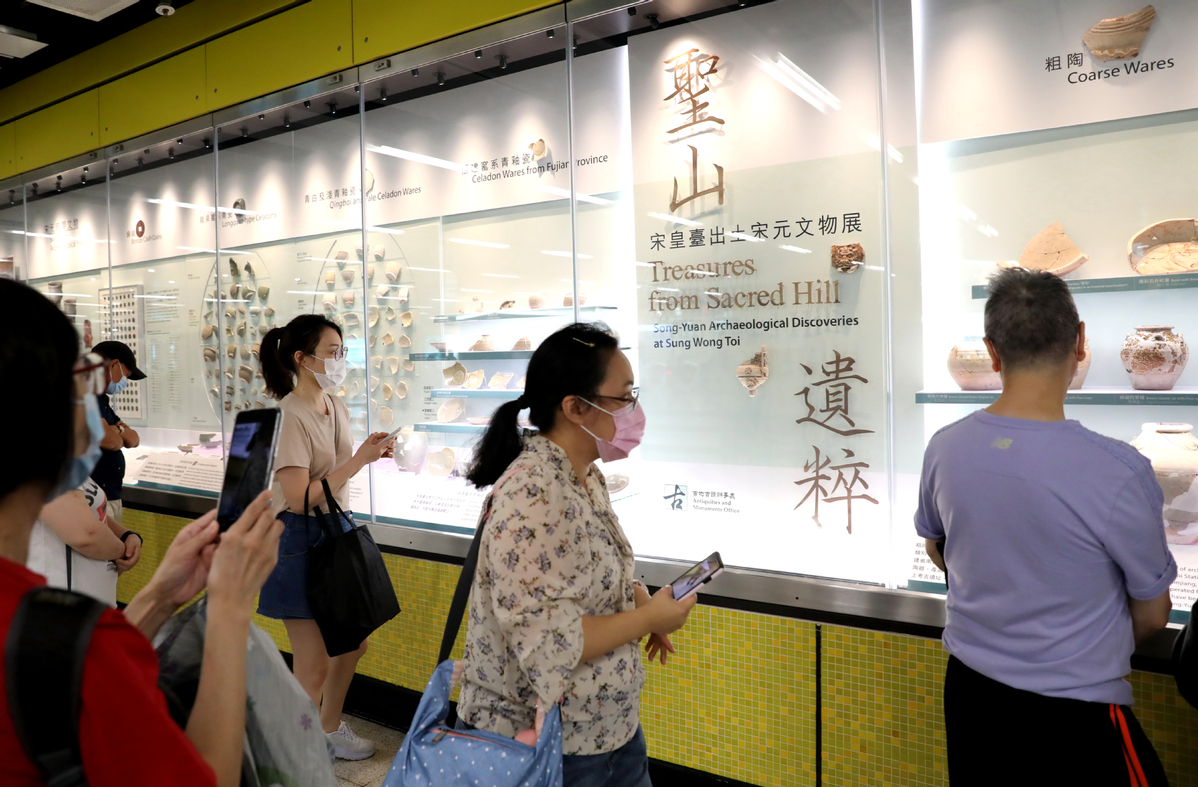

The exhibition welcomes an average of about 6,000 to 8,000 visitors per day, according to the Antiquities and Monument Office under the Hong Kong Special Administrative Region government's Development Bureau.
Susanna Siu, executive secretary at the Antiquities and Monument Office, said the exhibition is about "introducing people the history at an accessible place in a way that can interest them."
Historical literature says one young emperor, in the final years of China's Southern Song dynasty, stayed at the current Kowloon City for a few months while fleeing the Mongol onslaught. The name "Sung Wong," meaning Song emperor in Chinese, is thus coined in the name of the station.
The archaeological finds in Hong Kong have been derived from the same origin as that of the Chinese mainland, though the place was not at the center stage in China's ancient history, Ma said.
While a significant amount of relics unearthed from China's Song and Yuan dynasties, the name of Sung Wong Toi Station is written in running scripts known as "Xingshu" by MTR's retired architect Abe Au Kit Tong to echo the calligraphy style that was popular during the Song dynasty.
"Chinese calligraphy has become a signature for Hong Kong's subway platforms," Au, 71, who is now teaching Chinese calligraphy in Canada after retirement, told Xinhua via a video interview.